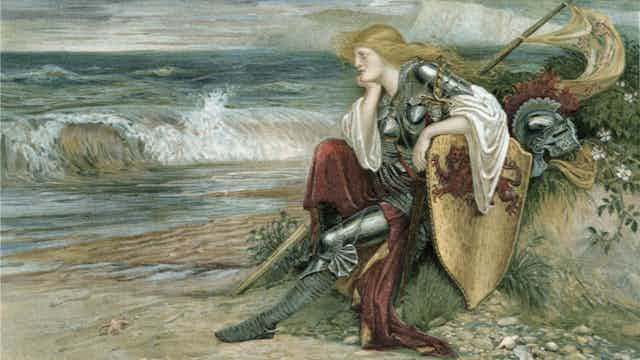A groundbreaking interdisciplinary study conducted by experts from the Universities of Nottingham and Leicester has opened new dialogue regarding the experiences of pregnancy during the Viking Age. This research not only highlights intriguing depictions of expectant mothers in art and literature but also sheds light on the challenging realities faced by newborns during this historical period.

The study, titled “Womb Politics: The Pregnant Body and Archaeologies of Absence,” published in the Cambridge Archaeological Journal, marks the first comprehensive examination of pregnancy in the Viking context. Spearheaded by Dr. Marianne Hem Eriksen and Dr. Katherine Marie Olley, the research synthesizes various forms of evidence, including Old Norse texts, a rare Viking Age figurine, and burial records, culminating in rich insights into this overlooked aspect of Viking life.
Dr. Olley’s analysis of Old Norse literature surfaces evocative terms regarding pregnancy such as “bellyfull,” “unlight,” and “to walk not a woman alone,” providing unique insights into the Viking conception of pregnancy. The sagas illuminated by the study reveal assertive portrayals of pregnant women, with tales of warriors and fierce mothers that challenge modern stereotypes of passivity. One saga recounts a fetus destined to avenge its father, hinting at complex social dynamics that extend even into the womb.

Pendant showing the only known Viking-Age depiction of a pregnant body. Credit: O. Myrin, The Swedish History Museum/SHM
Furthermore, some sagas feature Freydís, a pregnant warrior who boldly brandishes a sword during a violent encounter to fend off attackers. This portrayal starkly contrasts the conventional narrative of expectant mothers being relegated to a passive role, asserting instead their capacity for action and influence.
Despite these rich literary portrayals, the archaeological record presents a stark contrast, revealing scarce direct references to pregnancy. The study notes a troubling absence of mother-infant burials in the Viking archaeological record, despite a high estimated rate of obstetric fatalities during the era. Infant remains were notably underrepresented in burial sites, leading to uncertainties surrounding their fates and the practices surrounding their burials.
Dr. Eriksen draws critical connections between the study of pregnancy and larger social and political themes. She underscores how the politics surrounding pregnancy venture into demographic and economic spheres, questioning elements of kinship and personhood. The researchers also highlight historical legal frameworks that classified pregnancy in enslaved women as a “defect,” further elaborating on the exploitable nature of pregnant bodies in ancient societies.
This pioneering research not only enhances our understanding of gender and sexuality in the Viking Age but also invites a broader reconsideration of how we narrate women’s histories and their roles in society. Through the combined use of art, literature, and archaeology, the study offers a more nuanced perspective on the complexities of pregnancy in the Viking world, challenging entrenched narratives and encouraging a reevaluation of women’s societal roles.